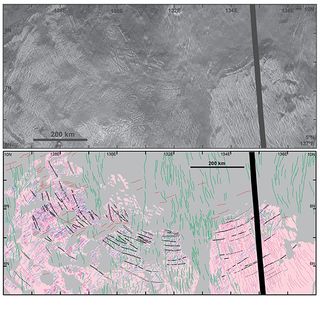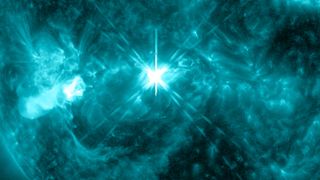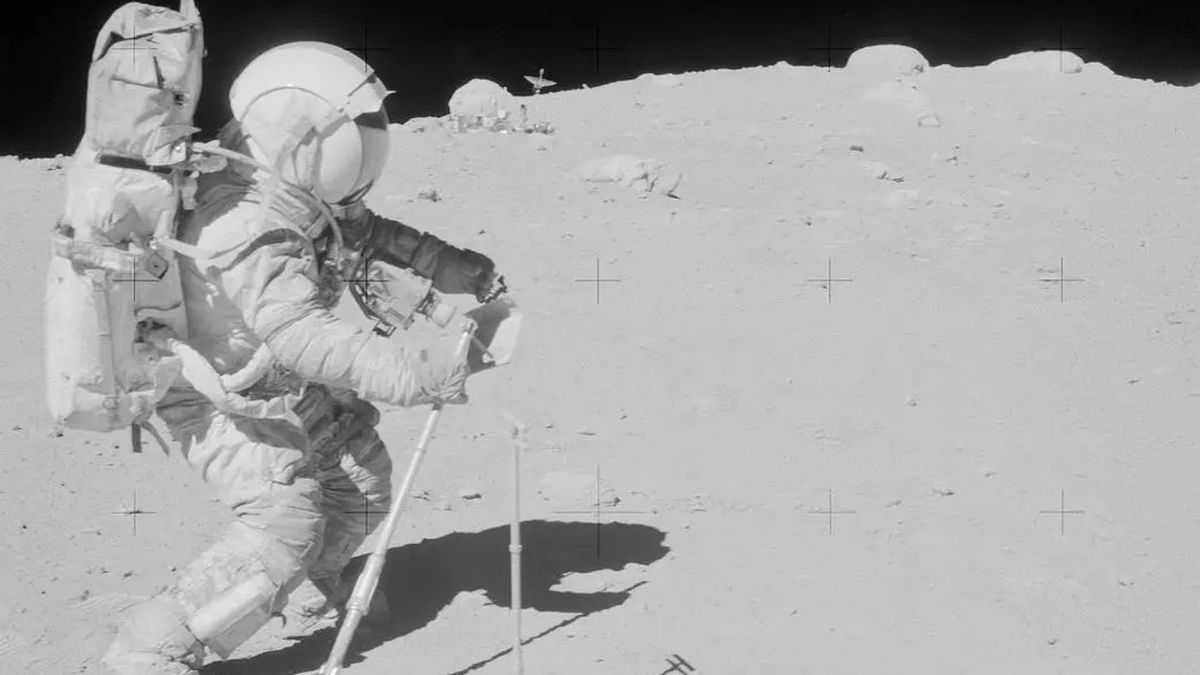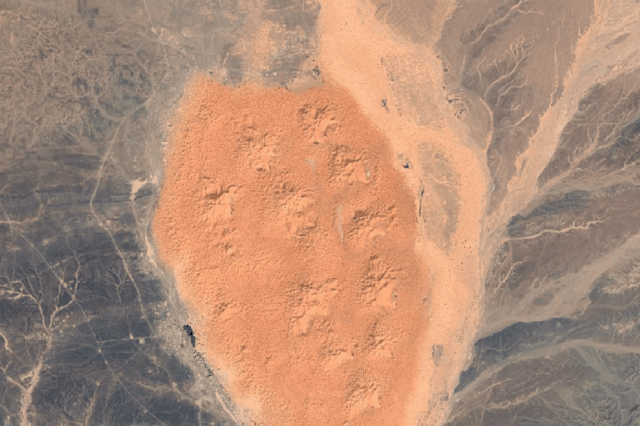Computer simulations suggest that Mars’ puzzling moons, Phobos and Deimos, may have been formed from debris created when a large asteroid wandered dangerously close to the Red Planet. This new model proposes that Phobos and Deimos resulted from the wreckage of a larger asteroid that wandered too close to Mars and crossed its Roche limit — the distance at which gravitational tidal forces emanating from the planet became too great and tore the asteroid apart. “It’s exciting to explore a new option for the making of Phobos and Deimos —…
Read MoreTag: Solar System
NASA satellites reveal Earth’s continents are getting drier
The amount of freshwater found on our planet has dropped significantly in the last decade, NASA satellites have found. An international team of scientists reviewed observations taken by the Gravity Recovery and Climate Experiment (GRACE) satellites operated by NASA, the German Aerospace Center and the German Research Center for Geosciences. The data collected by GRACE revealed that beginning in May 2014, there was a plunge in Earth’s freshwater supply, and the planet has still not recovered. The researchers suggest that this evidence could also mean Earth is undergoing a drier…
Read MoreNASA’s Parker Solar Probe is solving long-standing mysteries about the sun. Here’s what we’ve learned so far.
On Nov. 6, NASA’s Parker Solar Probe passed within 234 miles (376 kilometers) of Venus’ surface. The purpose of this close flyby was to accomplish a gravity-assist maneuver, in which the probe would steal some of Venus‘ momentum to change the spacecraft’s orbit and bring itself even closer to the sun. The Parker Solar Probe had already made several close passes of the sun, but the recent flyby was its closest, coming within about 3.8 million miles (6 million km) of the solar surface. That’s less than nine times the…
Read MoreVenus’ ‘missing’ giant impact craters may be hiding in plain sight
Impact features on Venus may have been staring us in the face all along That’s the message from a team of planetary scientists, who have explained Venus‘ apparent dearth of large craters by discovering that impacts could have produced the mysterious “tesserae” formations on the Venusian surface. Tesserae are large — sometimes continent-size — expanses of terrain that have been deformed and covered with wrinkle ridges, which make the landforms look like sheets of corrugated iron. They are formed by lava welling up to the surface, where it cools and…
Read MoreSun erupts with powerful X2.3 solar flare, triggers radio blackouts (video)
The sun erupted with an X2.3-class solar flare this morning, triggering radio blackouts The X-class solar flare was released from a sunspot region AR 3883 at 8:40 a.m. ET (1340 UTC) on Wednesday morning (Nov. 6). Sunspots are darker, cooler locations on the sun that measure the size of planets and denote where the sun’s strong magnetic field roils up to its surface. It was the sunspot region’s strongest flare yet. According to Spaceweather.com, the wait is on for scientists to receive data from the coronagraph on the joint NASA/European Space…
Read MoreSmall moon of Uranus may have once had a subsurface liquid water ocean
Over the last few decades, planetary scientists have been steadily adding to the list of moons in our solar system that may harbor interior oceans either currently or at some point in their past. For the most part, these moons (such as Europa or Enceladus) have been gravitationally bound to the gas giants Jupiter or Saturn. Recently, though, planetary scientists have been turning their attention further afield, towards the ice giant Uranus, the coldest planet in the solar system. And now, new research based on images taken by the Voyager…
Read MoreNew study of Apollo 16 moon samples reveals hidden lunar history
Scientists continue to piece together the moon’s complex history using lunar samples collected during NASA’s Apollo missions over half a century ago. A fresh analysis of lunar dust collected by Apollo 16 astronauts in 1972 offers a clearer picture of the effects of asteroid strikes on the moon, allowing scientists to reconstruct billions of years of lunar history. The findings could also help upcoming crewed missions pinpoint precious natural resources for establishing moon bases, scientists say. After landing in the heavily-cratered Descartes region in the lunar highlands, astronauts John Young,…
Read MoreBefore and after satellite images show lakes appearing across Sahara after deluge of rain soaks desert
Lakes have appeared in the Sahara after a cyclone brought a deluge of rain to northern Africa that drenched swathes of the largest hot desert on Earth, satellite images show. An extratropical cyclone hit parts of Morocco, Algeria, Tunisia and Libya on Sept. 7 and 8, dropping around 8 inches (20 centimeters) on the affected areas — equivalent to an entire year’s worth of rainfall in just a few days, according to NASA’s Earth Observatory. The deluge and runoff filled multiple ephemeral lakes in the Sahara, including the Sebkha el…
Read MoreSee Comet Tsuchinshan-ATLAS eject a tail of gas and dust as it flies past the sun (photos)
A dazzling comet left behind a dramatic dust tail as it swept around the sun, new photos reveal. C/2023 A3 (Tsuchinshan-ATLAS) was visible to the naked eye earlier in October as the comet, which is sort of an icy space snowball, flew past the sun and Earth. Fresh telescope footage from the U.S. Naval Research Laboratory reveals that the comet’s dust tail was visible near the sun “for several days”, long after the little world left the neighborhood, lab officials stated. Related: See the ‘comet of the century’ light up…
Read MoreWatch sun erupt in 1st images from NOAA’s groundbreaking new satellite (photos)
The first images from a new space-based telescope launched into Earth’s orbit to monitor the sun captured a striking solar storm outburst. The National Oceanic and Atmospheric Administration (NOAA) shared the first images taken by its Compact Coronagraph (CCOR-1), the world’s first operational space-based coronagraph. CCOR-1 is mounted on NOAA’s newest geostationary satellite, GOES-19, which launched into orbit above Earth on June 25. CCOR-1 began its mission to observe the sun’s corona — the faint outermost layer of the solar atmosphere — on Sept. 19. The powerful solar telescope uses…
Read More








